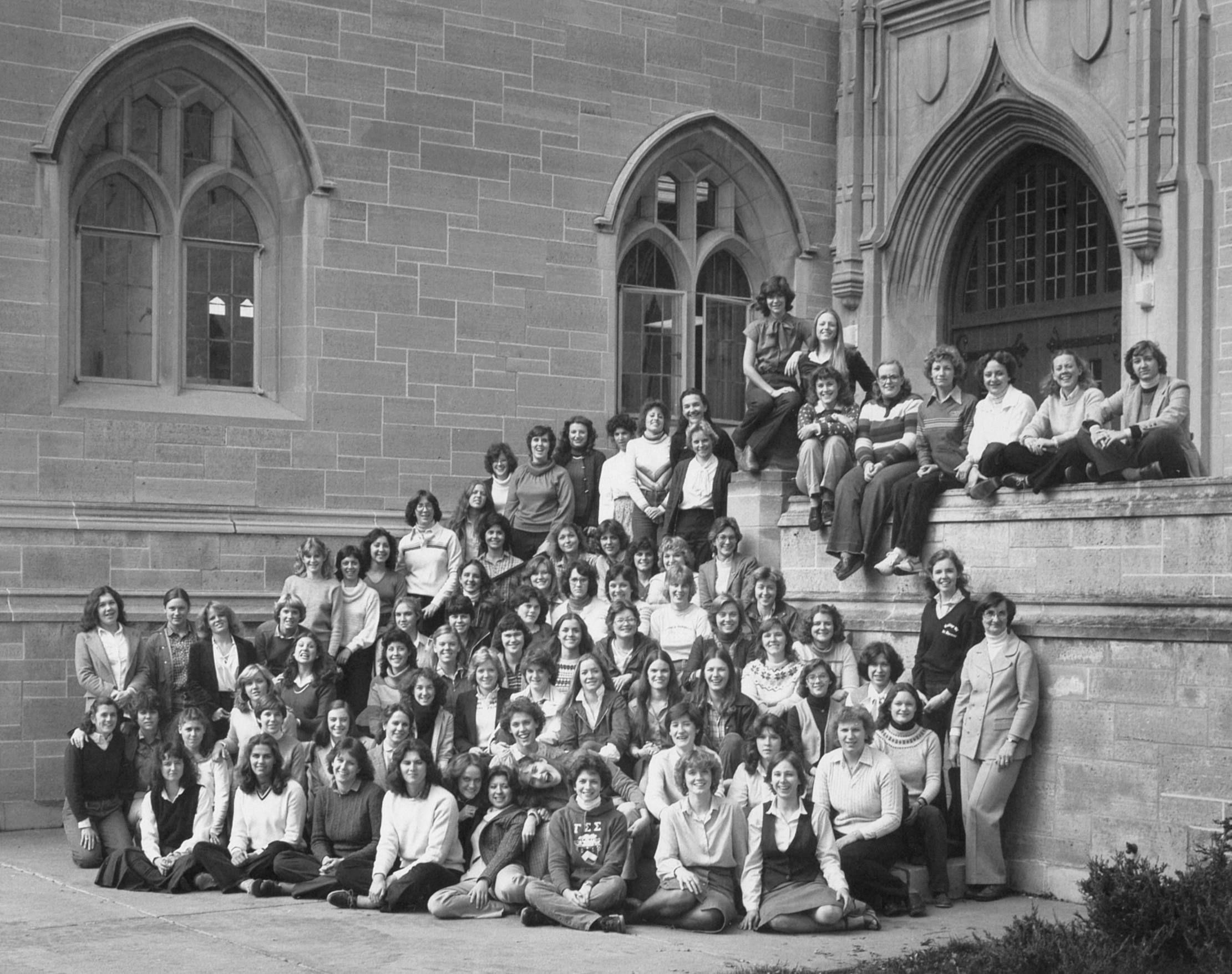On Sept. 7, 1977, the College of St. Thomas welcomed its first group of undergraduate women admitted on the same terms as men. While administrators expected to enroll only 100 women during the first year of coeducation, the numbers surpassed that estimate by over 100%. The 221 women registered for fall classes made up nearly 10% of the school’s total enrollment. Of that total, 51 were transfer students from other colleges and 170 were first-year students.
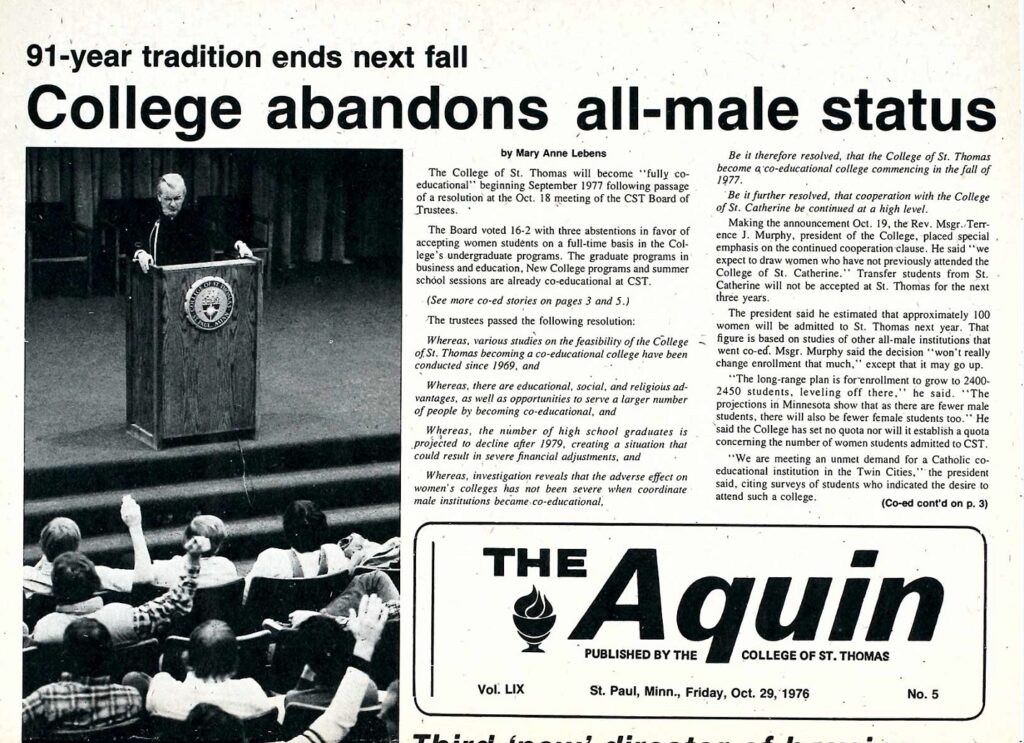
Women had not been completely absent from St. Thomas classrooms before 1977. Graduate programs (in education and business) and the New College program admitted female students from their foundation. Some specially admitted students (primarily women in religious orders) had been allowed to enroll in the undergraduate program. And students from the College of St. Catherine who took part in a cooperative exchange program were allowed to take classes at St. Thomas.
Discussions about changing St. Thomas from an officially all-male school to a coeducational school had circulated for many years. As far back as 1951, the St. Thomas chapter of the American Association of University Professors proposed that coeducation be considered. In 1969, the Educational Policy Committee appointed a group to explore the “academic practicability” of going coed. And in 1970, the Committee on Academic and Student Affairs surveyed schools who underwent the transformation to coeducation. But serious discussion about making the change did not begin in earnest until 1975 when a feasibility study was commissioned by the Board of Trustees. On Oct. 18, 1976, the board approved, by a 16-2 vote, a measure to accept female students on a full-time basis in the college’s undergraduate degree programs starting in the fall of 1977.
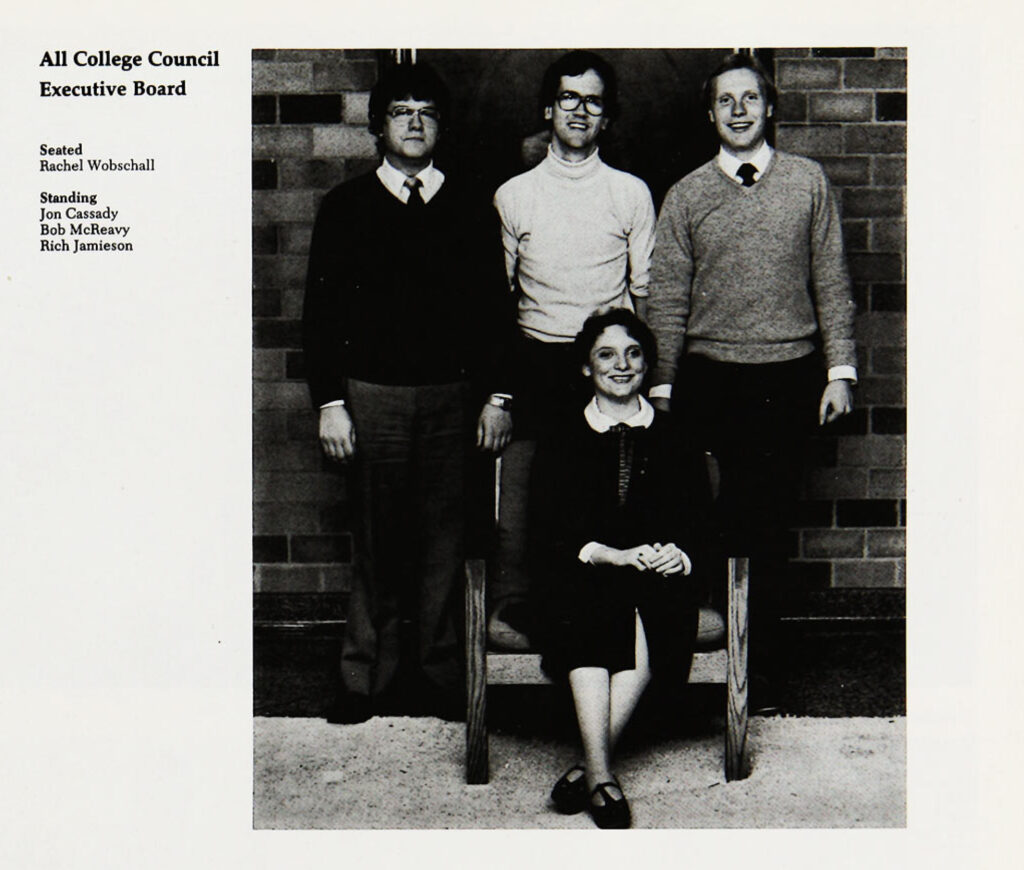
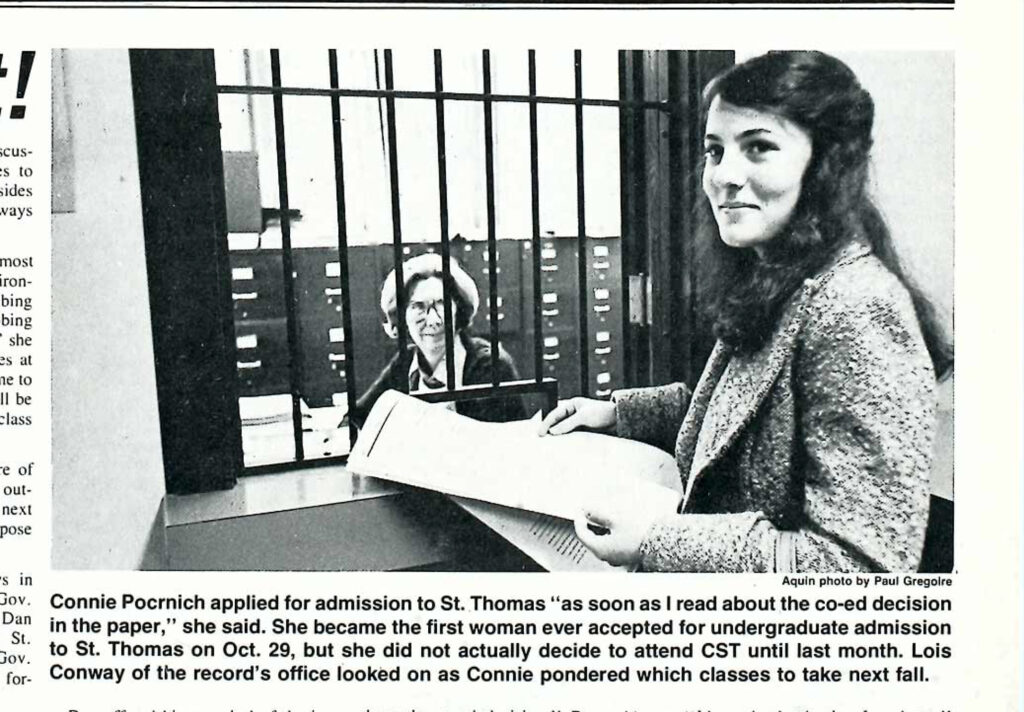
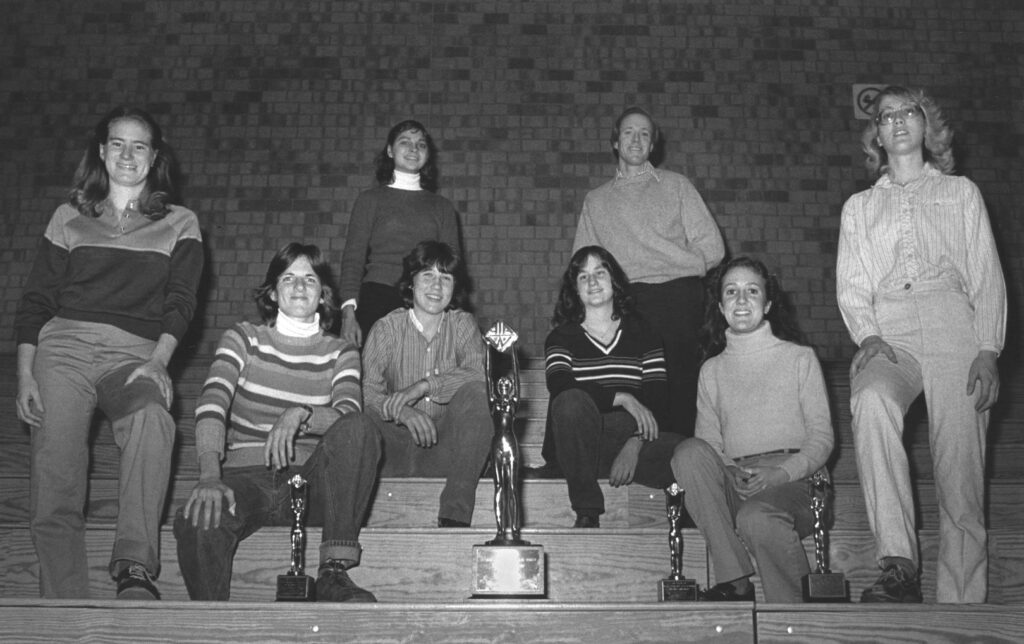
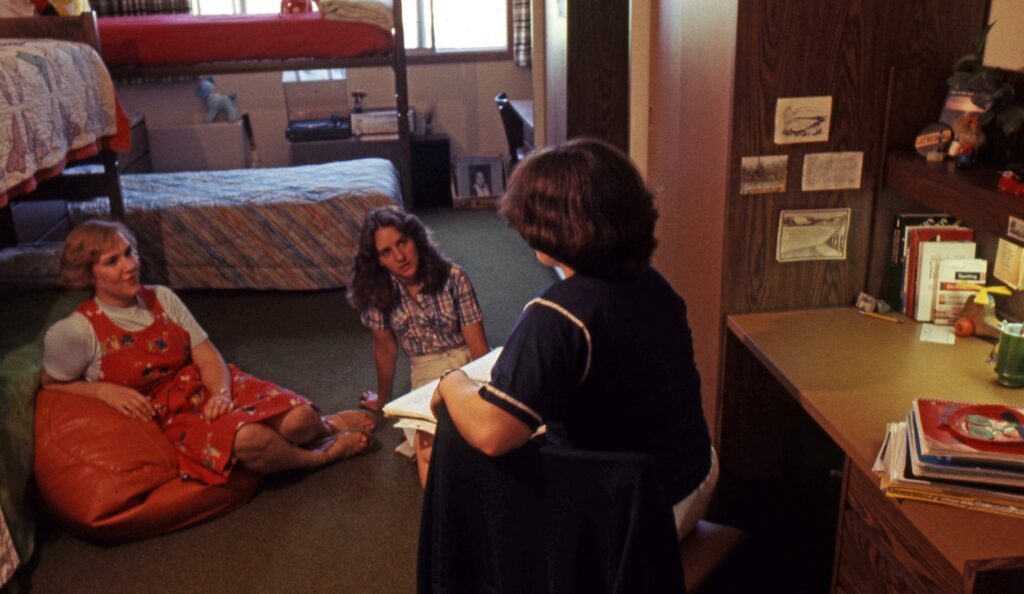
The Coeducational Implementation Advisory Committee spent the next year discussing and planning how each area of campus life would be tailored to accommodate a growing population of female students. Campus buildings were remodeled to add women’s locker rooms and create more women’s restrooms. A two-floor addition was constructed to Murray Hall to create the school’s first women’s residence hall. The Athletics Department hired coaches to offer eight new sports – women’s cross country, golf, tennis, softball, basketball, volleyball, track, and swimming. Dining Services even changed their menu options to make them more attractive to women.
Female students very quickly made an impact on making a mark in the classroom, in campus leadership roles, and on the athletic fields. Rachel Wobschall, for example, was elected the first female president of the All-College Council (now the Undergraduate Student Government) in 1980 and was elected first female Tommie Award winner in 1981. Also in 1981, the women’s cross-country team accomplished something no athletic team had done in the school’s 96-year history by winning the school’s first team national championship.
More Tales from the Archives
-
Tales from the Archives: The University Seal and Coat of Arms
People & Culture -
Tales from the Archives: Dowling and Brady Halls
People & Culture -
Tales from the Archives: Refugee Professors from Nazi Germany
People & Culture -
